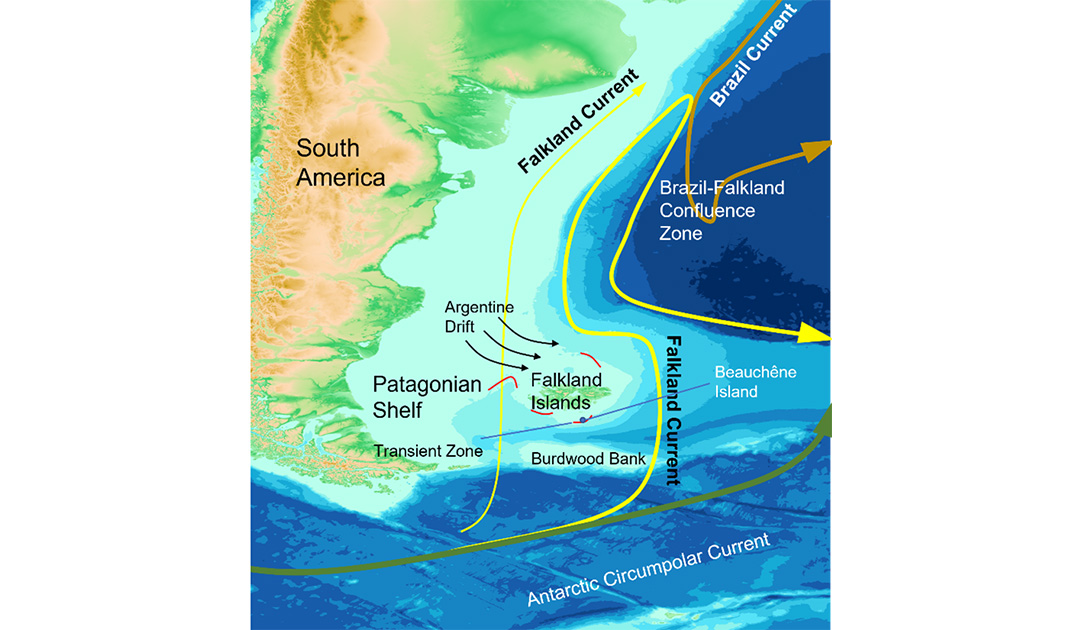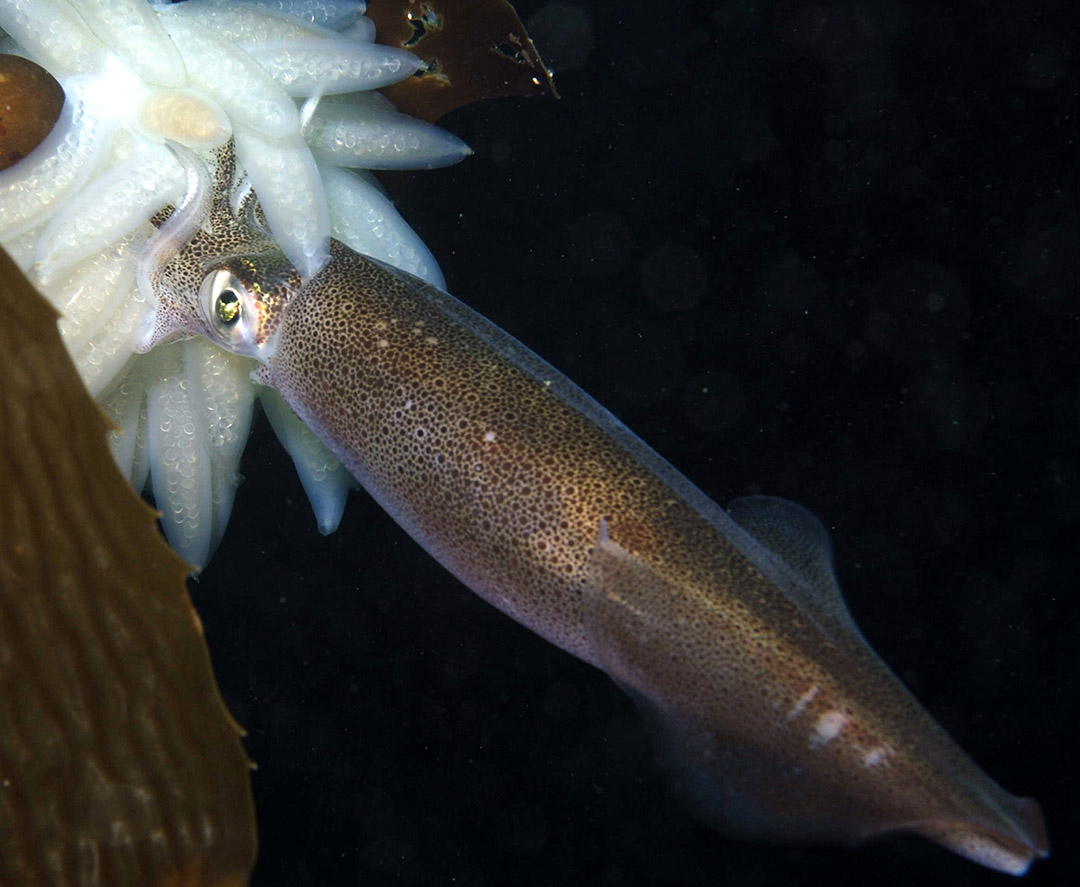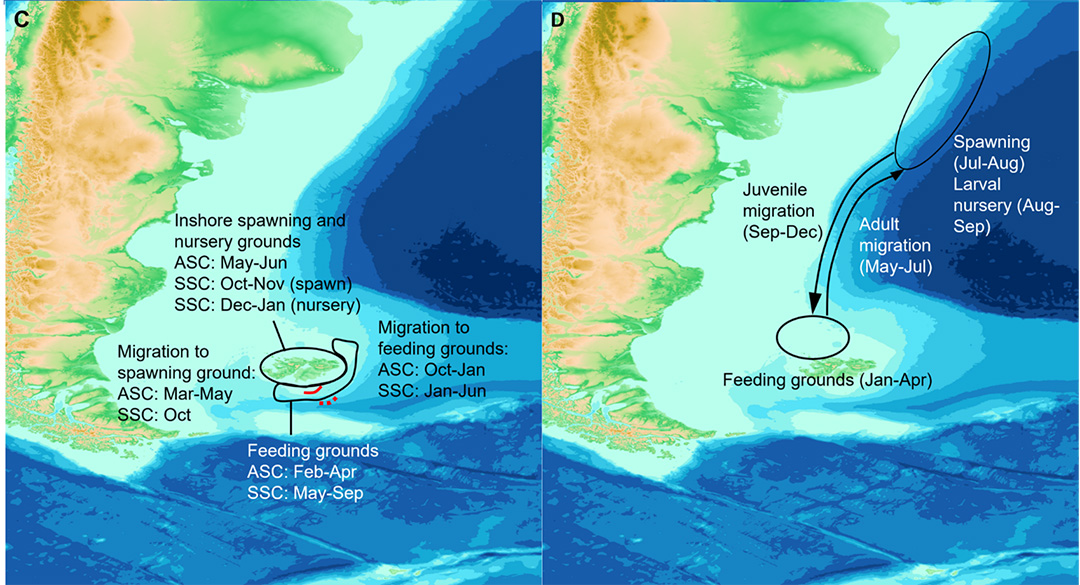
The marine food web around the Falkland Islands, with numerous species at the lower and upper trophic levels, is controlled by only a few species in between. These are more or less at the center of the food web and are therefore referred to as wasp-waist species. If they disappear due to climate change, overfishing, or other causes, this would have a serious impact on the trophic levels above and below them. A review study by the South Atlantic Environmental Research Institute, which appeared in the journal Advances in Marine Biology, summarizes what is known to date.
The Falkland Islands are located in the midst of nutrient-rich ocean currents and upwelling areas, providing ideal conditions for temperate and subantarctic species, especially large populations of whales, seals, penguins and other seabirds. Black-browed albatrosses (Thalassarche melanophris), Southern rockhopper penguins (Eudyptes c. chrysocome) and South American fur seals (Arctocephalus australis) have their largest breeding colonies in the world here. They all depend on relatively few species of fish, squid, and zooplankton.

“Food web systems can be controlled by bottom-up forces (via phytoplankton and zooplankton prey), top-down forces (via predator effects), but the Falkland Islands waters are a nice example of the third type: a wasp-waist dynamic,” Dr. Jesse van der Grient, a marine ecologist at the South Atlantic Environmental Research Institute (SAERI) in Stanley, Falkland Islands, and lead author of the study, told PolarJournal.

“In such a system, there are diverse assemblages of species in the lower trophic (e.g., zooplankton) and higher trophic (e.g., fish predators, seals, seabirds, etc.), but both sides are strongly affected by small-bodied zooplanktivorous species. Around the Falkland Islands, these species are likely the Patagonian squid (Doryteuthis gahi), southern blue whiting (Micromesistius australis), Patagonian rock cod (Patagonotothen ramsayi), Falkland herring (Sprattus fuegensis), lobster krill (Munida gregaria) and possibly an amphipod (Themisto gaudichaudii),” van der Grient added.

According to the study, some of these fish and squid species exhibit complex migratory patterns between spawning, nursery, and feeding grounds during their development, which are quite distant from each other in some species. By separating the different developmental stages in space and time, these species link food webs across a large area that stretches from the South of Chile to the East of Brazil. Wasp-waist species, in their various stages of development, are thus available to marine mammals, penguins, and other seabirds throughout the region.

However, van der Grient stresses that much more research is needed to understand the impact of these species on the whole marine food web. “For example, wasp-waist species are mobile and can migrate or even relocate to different areas in response to environmental change. As the planet changes, it is possible that such changes will also occur in the Falkland Islands.”


In the study, van der Grient and her colleagues identified several gaps in the understanding of the Falkland Islands marine ecosystem. For example, data are lacking on the seasonal abundance, distribution, and feeding of important food web components, including various krill and fish species, the amphipod Themisto gaudichaudii, lobster krill and benthic invertebrates. Furthermore, there is a lack of knowledge about the different habitats on the seafloor, which are important nurseries and feeding grounds. Although species of commercial interest are the best studied, knowledge of their responses to climate change is largely lacking.

In conclusion, van der Grient and her colleagues note that the responses of significant species to environmental influences, such as increases in water temperature, are poorly understood. However, this would be important for identifying potential winners and losers under climate change.
Julia Hager, PolarJournal
More on the subject:





